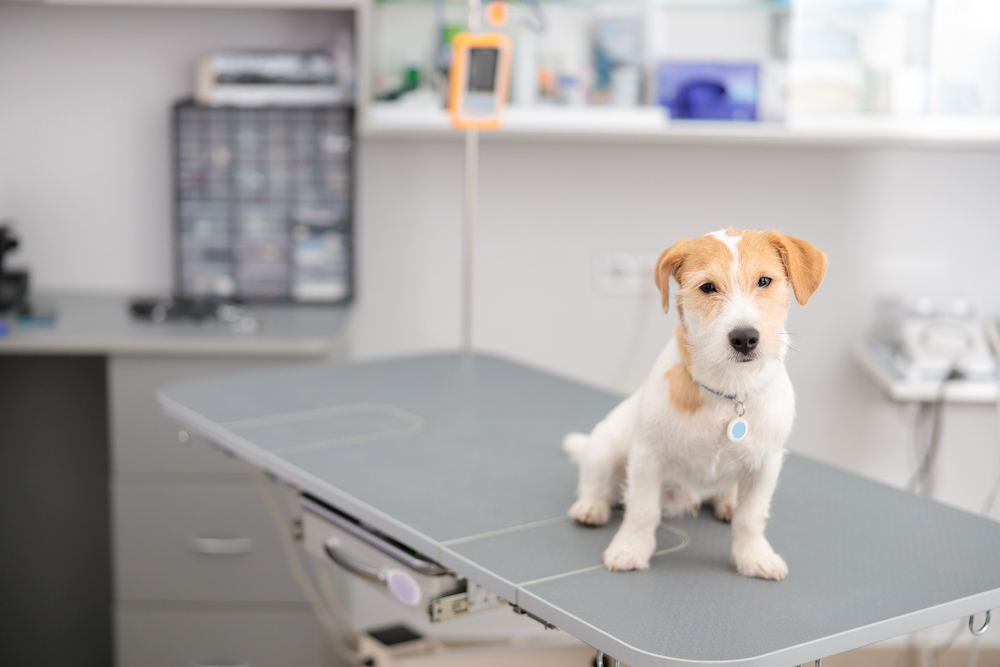Luxating patella, or kneecap dislocation, is one of the most common orthopedic issues in small breed dogs. And here’s the thing: it often creeps in quietly. No loud warning. No dramatic pain. Just subtle signs that are easy to miss, until it’s too late.
If you live in the UAE and your dog starts acting even a little “off,” this list will help you catch the signs early. The earlier you act, the better chance you have of avoiding surgery or long-term joint damage.
Let’s break it down.
1. Your dog suddenly skips while walking
You’ll see your dog lift one back leg mid-stride, hop a bit, then go back to walking normally like nothing happened. It looks harmless. But that skip usually means the kneecap just slid out of place and popped back in. Most owners shrug it off the first few times. Don’t. This is the #1 red flag.
2. Mild limping after a walk or playtime
If your dog’s limping after a walk but is fine after a short rest, it’s easy to assume it’s just tiredness. But repeated limping after low-impact activity is often how patellar luxation shows up early. It’s especially common in dogs under a year old.
3. Hind leg held up for a few seconds
You might see your dog suddenly stop, hold one leg in the air for a moment, shake it out, then move on. That little leg shake? It’s often them trying to realign the kneecap. If this happens more than once a week, take it seriously.
4. Avoiding stairs or jumping on furniture
Dogs don’t suddenly get lazy. If your pup used to bound up stairs or onto the couch and now hesitates or avoids it, they’re not just being cautious. Jumping puts pressure on the knees. If it hurts, they’ll stop. That’s your cue.
5. Visible change in leg position or muscle loss
Over time, chronic kneecap issues can cause the leg to turn inward or outward slightly. You may also notice the thigh muscle on one leg shrinking. Dogs naturally avoid using painful limbs, and their muscles waste fast. Spotting this early can save your dog from a lifelong gait problem.
6. Discomfort when you touch the knee
Dogs hide pain well, but not always. If you gently touch or move the knee and your dog flinches, pulls away, or looks back at you, don’t brush it off. That’s a pain response. Even if it’s mild, it’s worth checking.
7. Posture shifts or stiffness after naps
Watch how your dog stands after a nap. Is it slow to get up? Does it favour one leg? These aren’t just signs of aging, they can be early clues that the joint isn’t moving smoothly.
Why dog owners should act fast
Dubai and Abu Dhabi are home to plenty of flat surfaces and indoor pets, but that doesn’t mean joint issues are rare. Hot weather discourages outdoor play, and overweight pets are common. Both raise the risk. Medical centres like VetCare are seeing these signs earlier in younger dogs.
Breed matters too. The dogs most commonly affected include Poodles, Pomeranians, Yorkshire Terriers, Chihuahuas, French Bulldogs, Lhasa Apsos, Cavalier King Charles Spaniels, Bichons, Pugs, Bulldogs, West Highland White Terriers, Jack Russell Terriers, and Shih-Tzus. These breeds are popular in the UAE, especially among apartment dwellers, so owners should be extra observant.
Patellar luxation is graded from I to IV. Grade I and II can often be managed with weight control, joint supplements, and physical therapy. Grade III or IV? You’re likely looking at surgery.
And no, this isn’t just a small dog thing. While Pomeranians, Yorkies, and Chihuahuas are the usual suspects, vets in the UAE are starting to report cases in larger breeds too, especially when poor breeding is involved.
What you can do now
- Record your dog’s walking pattern on video. Vets love visual proof.
- Monitor your dog’s weight. Every extra kilo adds joint stress.
- Ask about non-surgical options early. The sooner you catch it, the more you can do.
Bottom line: If something feels off with your dog’s walk, don’t wait. Early action is smart and it’s the difference between managing a minor issue and dealing with a major one.



